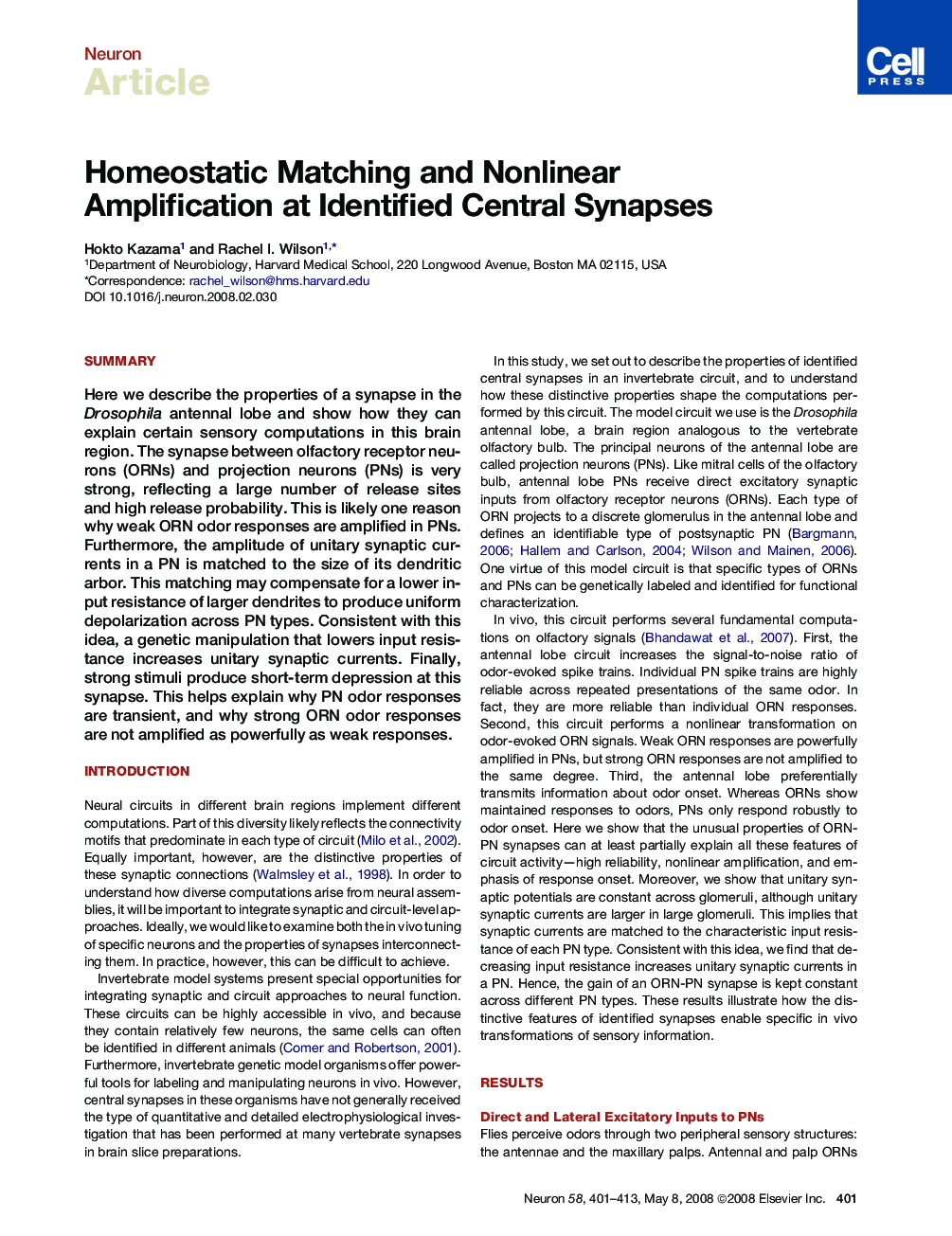| Article ID | Journal | Published Year | Pages | File Type |
|---|---|---|---|---|
| 4322410 | Neuron | 2008 | 13 Pages |
SummaryHere we describe the properties of a synapse in the Drosophila antennal lobe and show how they can explain certain sensory computations in this brain region. The synapse between olfactory receptor neurons (ORNs) and projection neurons (PNs) is very strong, reflecting a large number of release sites and high release probability. This is likely one reason why weak ORN odor responses are amplified in PNs. Furthermore, the amplitude of unitary synaptic currents in a PN is matched to the size of its dendritic arbor. This matching may compensate for a lower input resistance of larger dendrites to produce uniform depolarization across PN types. Consistent with this idea, a genetic manipulation that lowers input resistance increases unitary synaptic currents. Finally, strong stimuli produce short-term depression at this synapse. This helps explain why PN odor responses are transient, and why strong ORN odor responses are not amplified as powerfully as weak responses.
